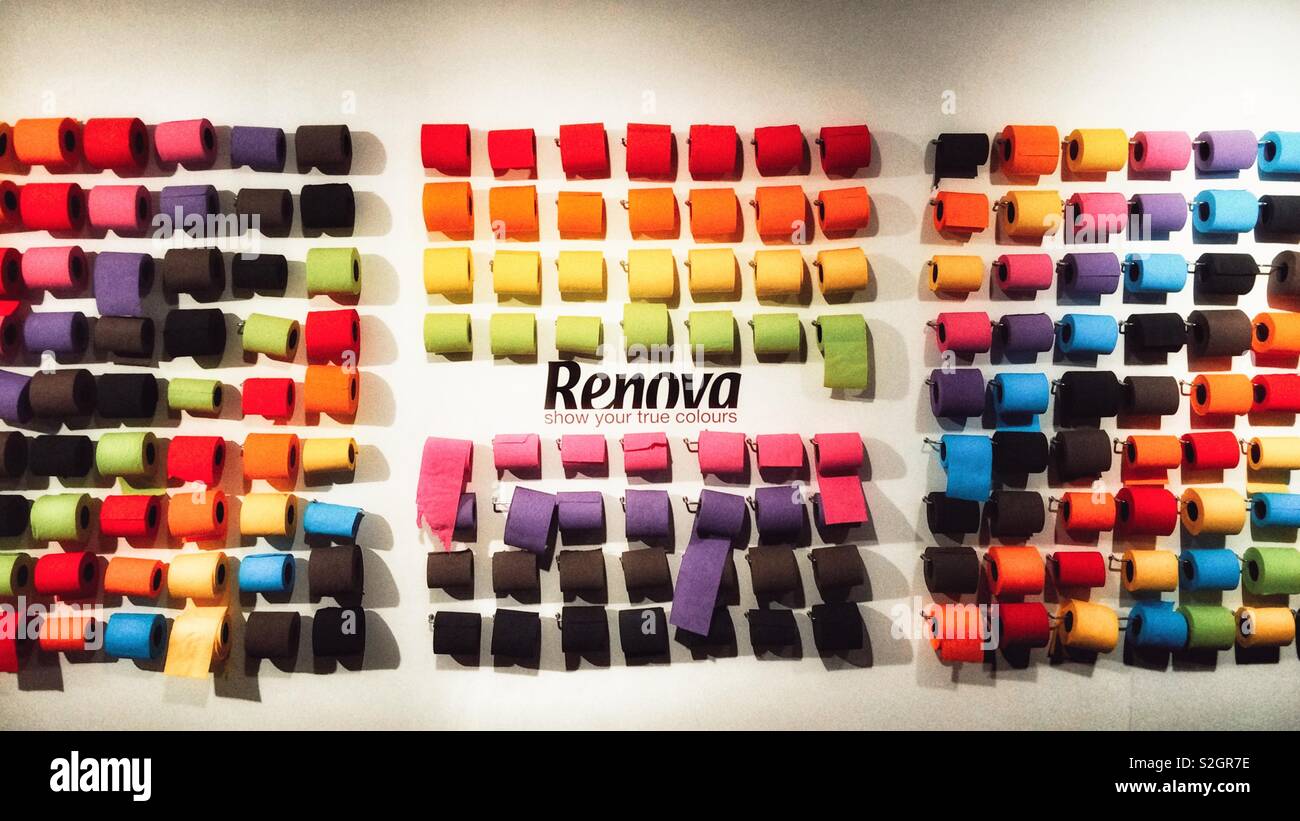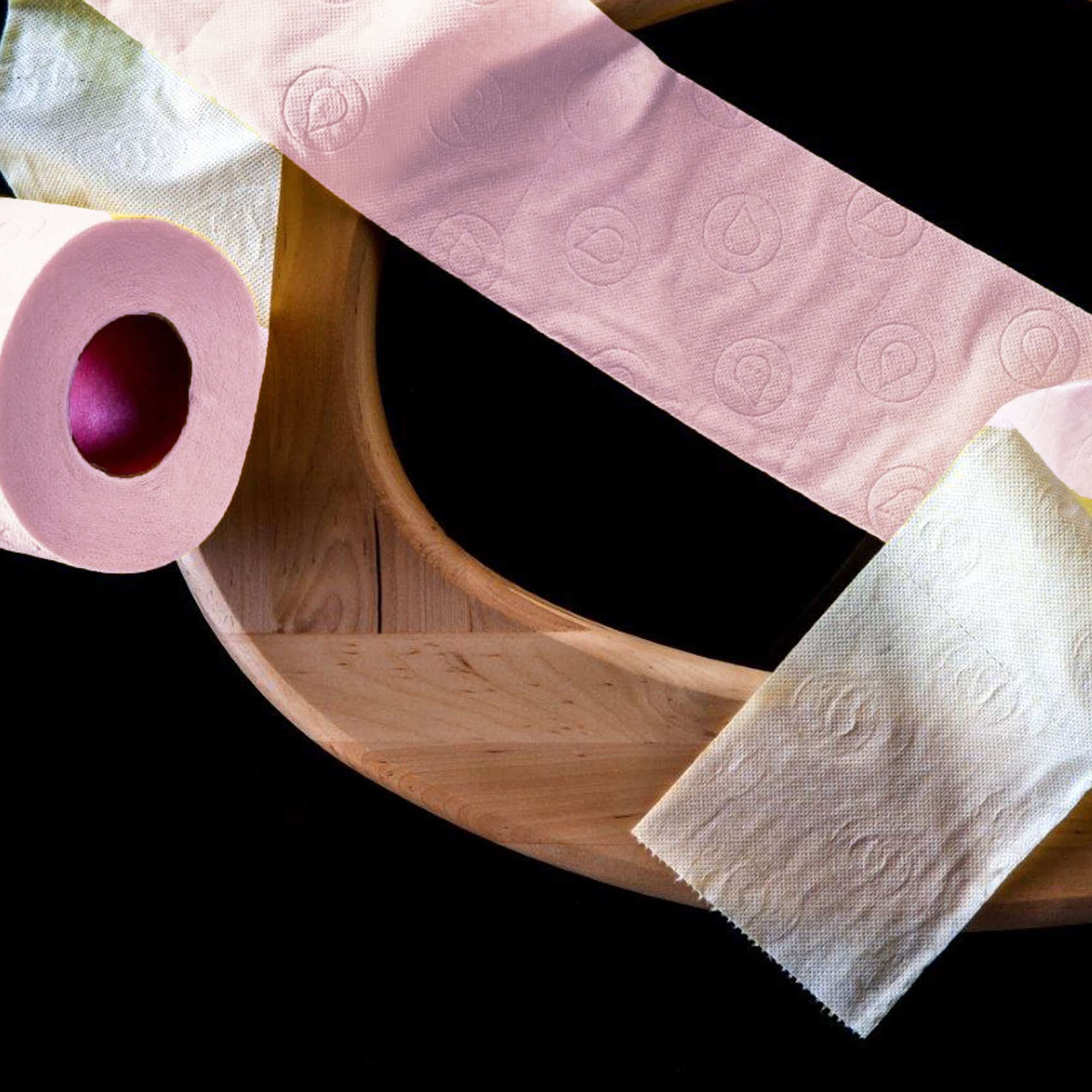toilet paper, an indispensable part of modern sanitation, has undergone a remarkable transformation over the centuries. From its humble beginnings as simple leaves or rags to the soft, absorbent rolls we use today, toilet paper has evolved to meet the changing needs of society. One of the most striking developments in this history is the advent of coloured toilet paper, which has added an unexpected touch of style and individuality to bathrooms around the world.
Introducing the Enchanting World of Rainbow Toilet Paper

The first coloured toilet paper appeared in the late 19th century. In 1890, the Albany Perforated Wrapping Paper Company in Albany, New York, introduced a line of toilet paper in a variety of colours, including pink, blue, and yellow. The product was marketed as a luxury item, and its vibrant hues were intended to appeal to the sensibilities of the Victorian era. This innovation sparked a trend that would continue to evolve and capture the imagination of consumers for decades to come.
Embrace Your Unique Style: A Palette of toilet roll Hues
In the early 20th century, coloured toilet paper gained popularity, particularly in the United States. Manufacturers such as Scott Paper Company and Charmin produced a wide range of colours, and consumers embraced the novelty of adding a pop of colour to their bathrooms. From pastel shades to bold and bright colours, there was a toilet paper hue to suit every taste and bathroom décor.
Revolutionizing Hygiene: The Rise of Coloured Toilet Paper
While coloured toilet paper may have initially been marketed as a luxurious and decorative item, it soon became apparent that it also had practical benefits. With the introduction of dyed toilet paper, individuals could easily see if they had thoroughly cleaned themselves after using the toilet. This was especially helpful for young children who were just learning proper hygiene practices. Moreover, coloured toilet paper was seen as a symbol of cleanliness and modernity, further adding to its appeal.
Unlocking Sustainability: Eco-Friendly coloured toilet rolls

As the 20th century progressed, concerns about the environmental impact of toilet paper production and consumption began to emerge. The use of dyes and chemicals in coloured toilet paper raised questions about its biodegradability and potential harm to the environment. This led to a decline in the popularity of coloured toilet paper, as more environmentally-conscious consumers turned to white or recycled toilet paper options.
However, with advancements in technology and consumer demand for sustainable products, eco-friendly coloured toilet paper has made a comeback. Manufacturers have found ways to produce coloured toilet paper using natural dyes and organic materials, making it a more environmentally-friendly option for those who still desire a bit of colour in their bathrooms.
From Pastel Dreams to Bold Statements: The Psychology of Coloured Toilet Paper

The colours we surround ourselves with can have a significant impact on our mood and emotions. This is also true for the colour of our toilet paper. While some may prefer the simplicity and cleanliness of white toilet paper, others may find joy and self-expression in colourful options.
According to colour psychology, pink promotes feelings of calmness and relaxation, making it a popular choice for bathroom decor. Blue is associated with trust, stability, and communication, making it a popular option for shared bathrooms. Yellow is often associated with happiness and positivity, making it a fun and cheerful choice for family bathrooms. And for those looking to make a bold statement, red can evoke passion and energy.
Hygienic Innovation: Coloured Toilet Paper for Improved Health
Beyond its aesthetic appeal, coloured toilet paper has also been developed with enhanced hygiene in mind. In recent years, there has been an increase in the production of antibacterial coloured toilet paper. These products contain added ingredients such as aloe vera or chamomile, which are known for their soothing and healing properties. This makes them ideal for individuals with sensitive skin or those recovering from certain medical procedures.
Additionally, some coloured toilet papers are infused with essential oils that provide a refreshing scent, helping to mask unpleasant odours in the bathroom. These innovations not only add a touch of luxury but also contribute to improved hygiene and overall well-being.
Creative Expressions: Customizing Your Bathroom with Coloured Toilet Rolls
As with any form of self-expression, coloured toilet paper is an excellent way to add a personal and unique touch to your bathroom. With the wide range of colours available, you can mix and match to create a colour scheme that reflects your individual style and personality. Some manufacturers even offer customizable options, allowing you to print your own designs or messages on rolls of toilet paper. This opens up endless possibilities for creative expressions and makes for a fun addition to any bathroom.
Unveiling the Secrets: How Coloured Toilet Paper Is Made
Have you ever wondered how coloured toilet paper is produced? It may surprise you to learn that it is not as simple as dyeing white toilet paper. The process involves various stages, including bleaching, drying, and adding colouring agents. The specific ingredients used may vary depending on the manufacturer, but here is a general overview of how coloured toilet paper is made:
- The base material (usually recycled paper) is fed into a large machine and mixed with water to form a pulp.
- The pulp is then pressed onto a moving wire mesh screen to remove excess water and form a thin sheet.
- The sheet is then dried and passed through heated rollers to make it smoother and more absorbent.
- In the case of coloured toilet paper, the sheets are then passed through a printer where the desired colour is applied using food-grade dyes.
- After the colour has been added, the sheets are wound onto large rolls and cut into individual rolls.
- The rolls are then perforated and embossed before being packaged and sent for distribution.
The Woven Tapestry of History: Coloured Toilet Paper Through the Ages
To fully understand the impact of coloured toilet paper, it is essential to explore its history and evolution through the centuries. In ancient times, various cultures used a wide range of materials for personal hygiene, including leaves, grass, and even corn cobs. It wasn’t until the 6th century in China that the first documented use of paper for hygiene purposes was recorded.
In the 14th century, paper production spread to Europe, and by the 16th century, toilet paper was commonly used among the wealthy elite. However, it wasn’t until the 19th century that coloured toilet paper made its debut, thanks to advancements in paper production technology.
As mentioned earlier, coloured toilet paper gained popularity in the late 19th and early 20th centuries. However, with the rise of environmental concerns and advancements in technology, white toilet paper gradually became the norm in the mid-20th century.
Today, the production of coloured toilet paper has become more sustainable and environmentally-friendly, making it a popular choice once again. With innovations in design and production, we can only imagine what the future holds for this colourful and ever-evolving product.
Conclusion
From its origins as a luxury item to its practical and sustainable benefits, coloured toilet paper has come a long way. Its evolution reflects the changing needs and preferences of society, while also adding a touch of fun and creativity to our bathrooms. Whether you prefer the simplicity of white or the vibrant hues of a rainbow, coloured toilet paper continues to revolutionize the way we think about hygiene and consumerism. So go ahead, embrace your unique style and add a splash of colour to your bathroom routine.